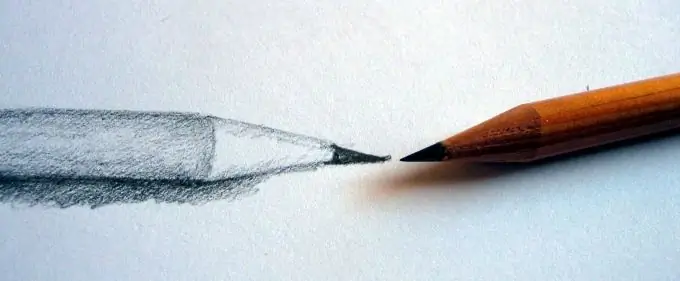A sketch is a drawing that is an exact copy of what you want to paint on your easel. A sketch is needed in order to accurately calculate the proportions of objects, which is much easier to do in a small drawing. When drawing a sketch, you should adhere to the basic rules of its construction.

It is necessary
- - pencil;
- - eraser;
- - paper.
Instructions
Step 1
Prepare some pencils in advance. Your pencil should always be well sharpened. Do not use a regular store sharpener. Attach sandpaper to the tablet to grind the lead on it so that work does not stop when the lead is blunt.
Step 2
Begin to hone your skills on the objects that you see around you every day. Household items are simple in shape and therefore easy to draw. They are based on geometric shapes: cube, prism, cone, pyramid.
Step 3
To draw the cylinders, start by drawing the axis of the cylinder. In relation to the axis, the bases of the ovals are marked. Draw large oval diameters at right angles to the axis of the cylinder. Determine the width and length of both bases and draw circles with smooth lines. Next, draw tangent lines to them. Practice drawing a standing and lying cylinder.
Step 4
Use construction lines when drawing cylinders. They clarify the proportions and position of the object in space. Cover some areas with hatching, which will emphasize the direction of the shape and volume.
Step 5
Next, learn to draw prisms and pyramids. On a piece of paper, outline the composition of the drawing and start drawing the base of the prism. To do this, first draw a circle of appropriate proportions in perspective. Mark the corners of the hexagon on it. Draw prisms and pyramids in different positions to improve your drawing technique.
Step 6
Try drawing a rectangular box. Determine its position in space. Mark in perspective in the sketch with lines all the outlines of the box (all sides). Add shadows and highlights. Draw this object several times in different positions.
Step 7
The first lines in the sketch should not be drawn very clearly, because you will have to fix or redraw something. The main thing is that your sketch contains absolutely all the details that you will transfer to the main drawing. Do not think that you will then finish drawing one detail of the image in one place, and another in another. Everything should be shown in the sketch in advance. This will make it easier for you to draw on the main sheet of your painting.
Step 8
Pay attention to light and shadow. You should reflect the play of light and shadow in the drawing. Do not press down hard on the pencil in areas where the subject is strongly lit. Highlight the darkened parts of the subject with maximum pencil pressure. Use your finger to blend the pencil at the transitions of light and shadow.
Step 9
Pay attention to your position in relation to the object you are about to draw. It depends on what kind of image, from what angle, you want to get. Learn to draw sketches not only with a pencil, but also with paints. Your sketch should be finished and shaped.






